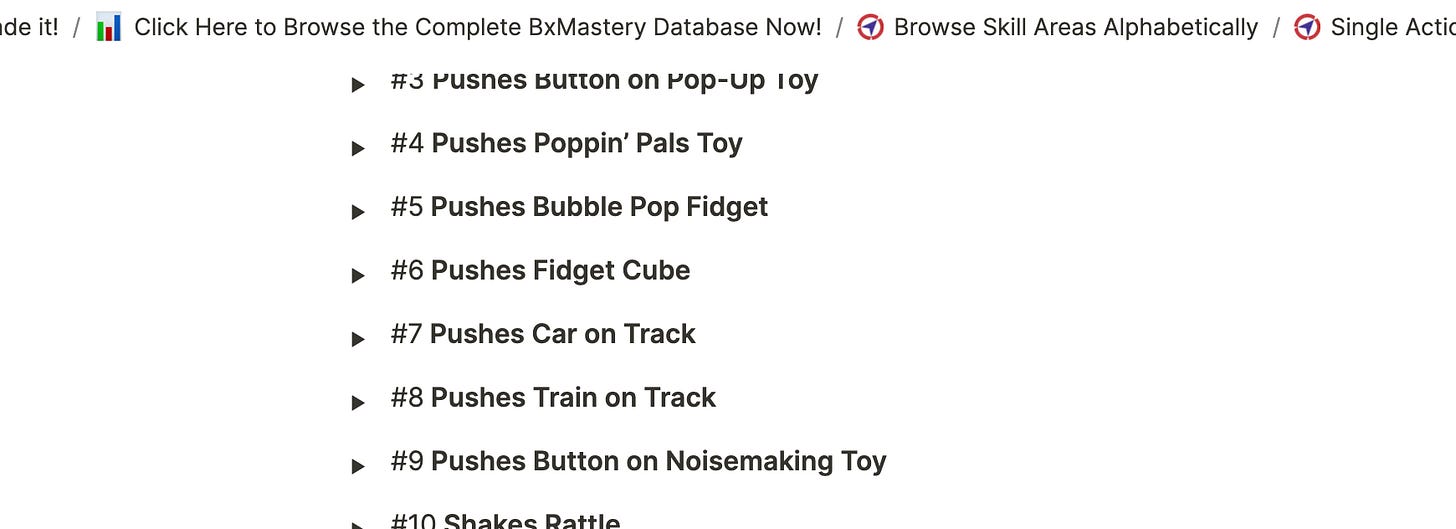Shake, Rattle, and Reinforce: A Playful Approach to Creating Joy
I’ll begin by revisiting something we started unpacking last week: reinforcing exploration in learners. It’s the kind of thing that sounds straightforward but turns into a Rubik’s Cube when you start digging into the details. So, let’s make it simple, useful, and—dare I say it—a bit fun.
First, we start with the obvious: reducing maladaptive behaviors like tantrums or aggression usually hinges on building skills. Imagine a seesaw. On one side, you have communication and functional skills. On the other side, you’ve got problem behaviors. When one goes up, the other tends to come down. A kid who can ask for an iPad with a word or gesture is far less likely to lose their cool when they want it. This is ABA 101, but it’s worth repeating: skill acquisition isn’t just helpful; it’s essential.
But here’s where things get overlooked. It’s not just about teaching a child to ask for an iPad. It’s about what happens when the iPad isn’t around. What if it dies? What if their favorite game disappears? Kids who rely on just one or two reinforcers are in for a rough ride when those reinforcers go AWOL. And that’s where fading reinforcement and broadening experiences come in—a step that’s often skipped because it’s hard. Frankly, I’ll say it: too many of the esteemed minds in our field—brilliant as they are—overlook the subject of reinforcer enrichment.
So, anyway, back to it. How do we fade reinforcement? We start with reinforcing learner exploration. We teach kids to pivot from their favorite thing to something new. If a child starts poking around in a toy box, that’s gold. Reward the curiosity with their favorite stuff! Last week, we focused on this very idea—reinforcing the act of shifting attention. But this week, I go deeper. Specifically, in regard to the “how” and “why” of exposing kids to a buffet of reinforcers. The goal isn’t just to have options but to create familiarity around them.
Motivating a learner to be curious and explore their environment is awesome. But, what if they don’t know what to do with the things they come across?
The reality is that—thanks to a small lifetime of exploration having not been rewarded—some kids don’t know how to “work” a toy. A pop-up toy might sit in front of them like an unsolvable puzzle. The buttons, levers, and sounds end up being potential enjoyment that goes untapped. Our job is to bridge that gap. We’re not trying to force play—we’re simply guiding them to experience what the toy does. Press the button, see the character pop up, hear the sound. That’s the kind of exposure we’re talking about. And to make it stick, we pair these experiences with something they already love—like another favorite toy, device, or activity. The goal? To create a moment where they realize, “Hey, this toy does something cool when I do this.”
This isn’t just about building their personal library of toy experiences; it’s also about discovering a few toys or activities that hold their attention longer than others. If a child tunes in more than usual with 10 different toys, they’re far more likely to explore those toys again when their favorite reinforcer (like the iPad) isn’t available. Now, incredible frustration dials down as they have options. Maybe it’s a tambourine, a fidget toy, or a Hot Wheels car. Training them on what these things do opens that door.
One key here is to be intentional. See video above (it’ll hit home a little more).
Don’t just scatter toys and hope for the best. Introduce each toy deliberately. Show the learner how it works, pair it with a reinforcer, and then let them take the lead. As long as they’ve demonstrated how the toy works, don’t force the issue any further. If they truly like the experience, they’ll go back to it. For example, you might hand them a slinky, guide their hands to stretch it out, pull on it, make it go down a stairs and reward them with their item or activity. The idea isn’t to make them love the slinky forever; it’s to ensure they know what it does and how to engage with it. That knowledge alone creates opportunity.
(Above, a screen shot of a few of these targets at BxMastery.)
Over time, this process builds independence. A child who knows how to interact with a variety of toys is better equipped to navigate situations where their go-to reinforcer isn’t available. They’re less likely to have meltdown because they’ve built a toolbox of options. And they’re more likely to explore their environment, which opens doors to even more learning and reinforcement opportunities. It’s a cycle—and it’s a powerful one.
So here’s the takeaway: curiosity is step one, but experience is step two.
Martin Myers is a BCBA with a passion for helping improve the field of ABA. He is the creator of BxMastery, with over 4,000 goal ideas, sequenced, to inspire your programming. With 10+ years of experience in the field, he’s dedicated to empowering others and fostering positive change through effective leadership and communication. Connect with Martin on LinkedIn, Facebook, Instagram, and TikTok for more insights and updates.






